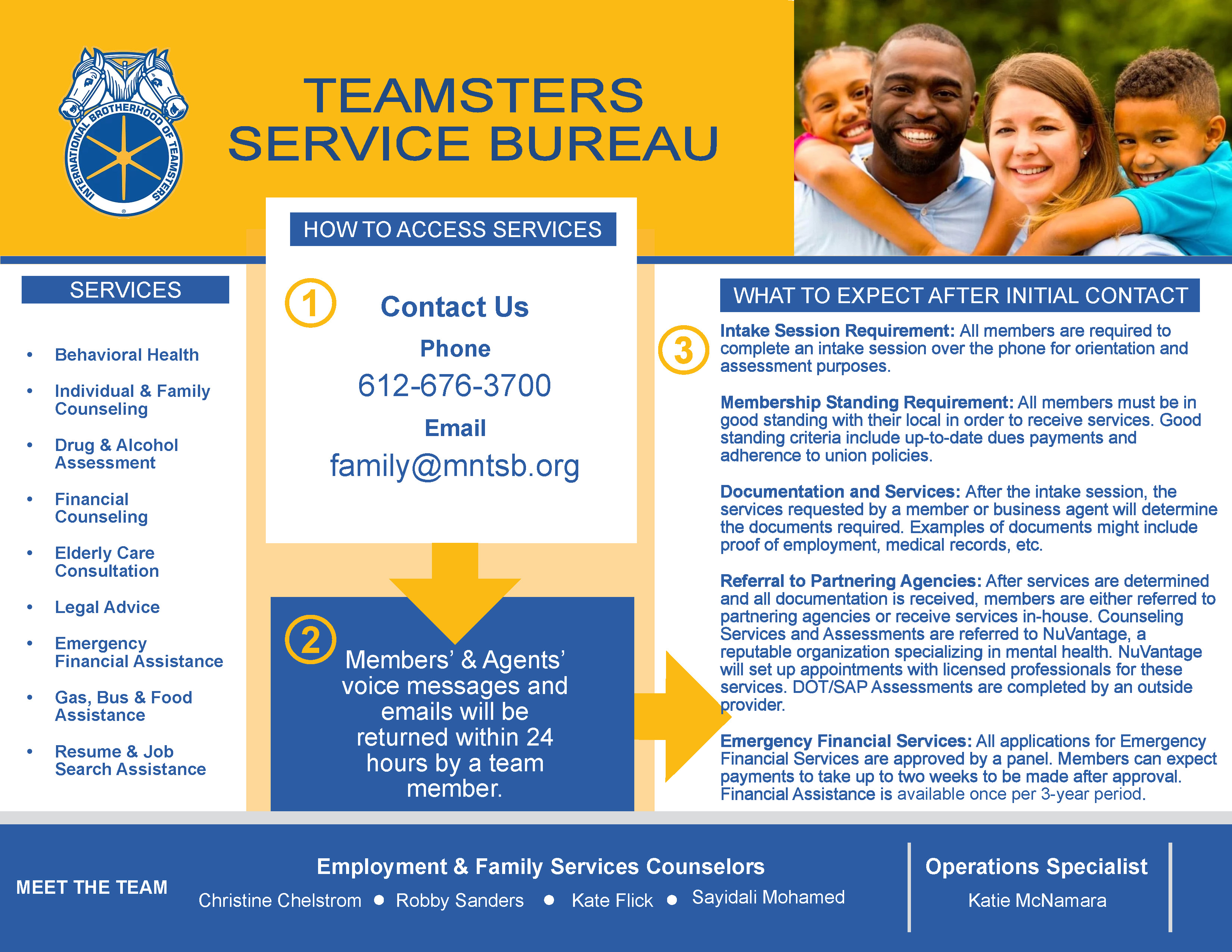-
To all Local 346 Members. Please consider donating a few dollars to one of your Union Brothers/Steward Chris O’brien. Chris is a Member/Steward at Grand Marais School. He has been fighting the good fight for the past few months, which puts a heavy financial drain on the family at home. $5, $10, $20 donations add up and make a difference in people’s lives.
Here is a Go-Fund-Me link to make any small donation.
https://www.gofundme.com/f/support-for-our-family-after-another-cancer-diagnosis
Thank you for your consideration.
What can we help you with?
Click on any link for information
Dues Payment Information Membership Apps/Withdrawal Apps/Grievance Forms
Office Hours Organizing Teamsters DRIVE Weingarten Rights Form a Union
*** NEW Teamsters VIP+ - Benefit Program ***
***CLICK HERE***
WI Natural Gas Energy Infrastructure Project - Support Document
***CLICK HERE****

Organized labor has had an important roll in your life, whether you have been in a Union, or not. When your current employer is taking advantage of you and your co-workers, you need to form a union. America was built on unions, and the time to orginize against greed is now.
Please Click the Organize Today link to send your information to a Business Agent.
Deceptive "Right-to- Work" Laws Hurt Everyone
By many measures, quality of life is worse in states with so-called "right-to-work" laws. Wages are lower, poverty levels are higher as are workplace fatality rates.
States with "Right-to-Work" Laws Have Lower Wages and Incomes-
On average, workers in states with right to work laws make $6,109 a year (12.1%) less annually than workers in other states ($44,401, compared with $50,511).
-
Median household income in states with these laws is $8,174 (13.9%) less than in other states ($50,712 vs. $58,886).2
-
29.6 percent of jobs in right to work states were in low-wage occupations, compared with 22.8% of jobs in other states.3
READ MORE >> “Right-to-Work” States Still Have Lower Wages, EPI, April 2015
States with "Right-to-Work" Laws Have Higher Workplace Fatality Rates
-
"Right-to-Work" makes workplaces more dangerous. According to data from the Bureau of Labor Statistics, the rate of workplace deaths is 54% higher in right-to-work states.4
READ MORE >> Death on the Job: The Toll of Neglect, AFL-CIO, April 2016
States Should Decide if They Want "Right-to-Work"
-
Every state has the right to workplace rules that work for their local economy. We don't need Washington politicians interfering to pick winners and losers.
READ MORE >> A tale of two states (and what it tells us about so-called “right-to-work” laws), EPI, January 2017
READ MORE >> So-called “right-to-work” laws will lower wages for union and nonunion workers in Missouri, EPI, January 2017
1 Bureau of Labor Statistics, Quarterly Census of Employment and Wages (all industries, all establishments, average annual pay), 2014 data. Numbers are rounded ($50,510.58 and $44,401.17).
2 U.S. Census Bureau, Table H-8. Median Household Income by State: 1984 to 2014.
3 CFED, Asset and Opportunity Scorecard, Low Wage Jobs, 2013.
4 Bureau of Labor Statistics, National Census of Fatal Occupational Injuries in 2014. -
|
|
|
|
| Member Resources |


